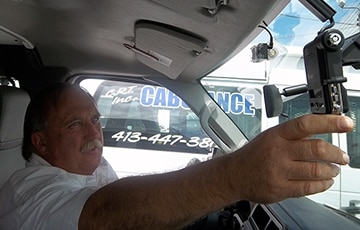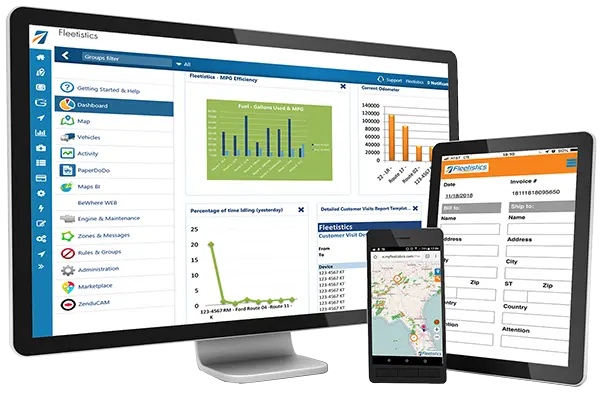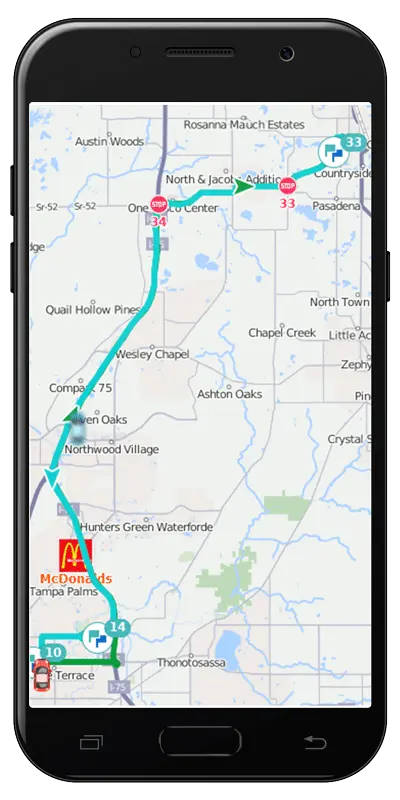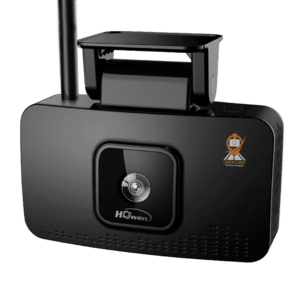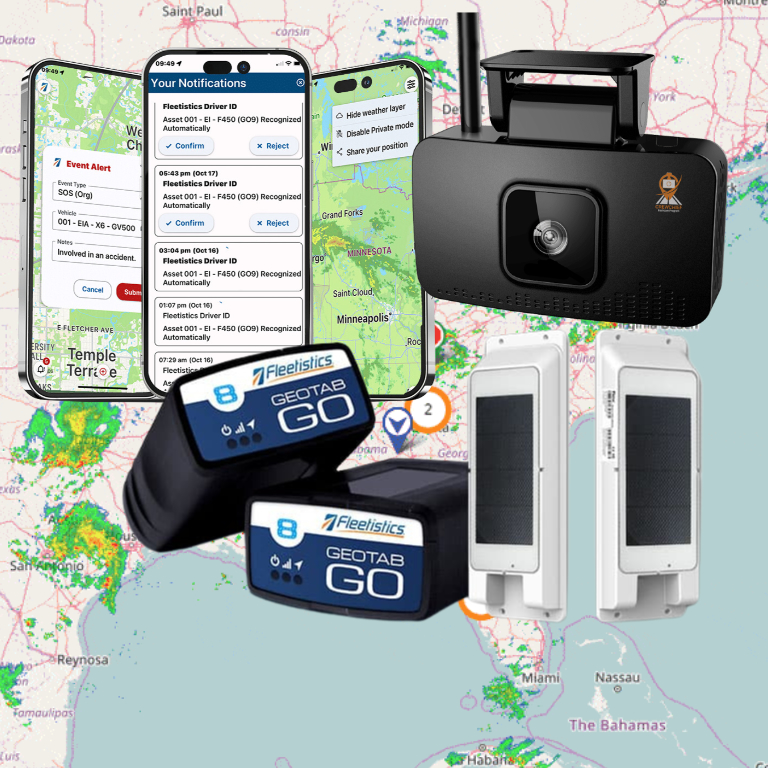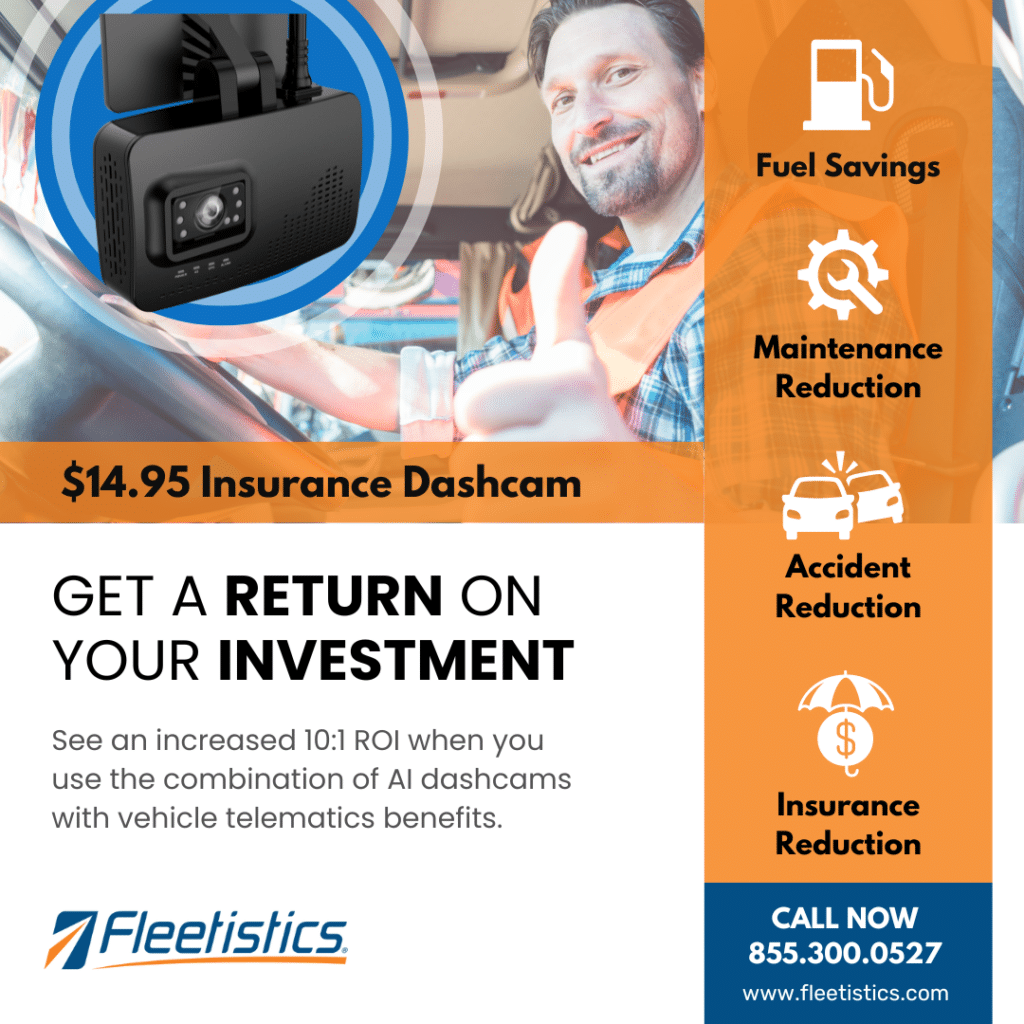Controlling Costs With Driver Facing Video
When using driver facing video, understanding how camera settings impact your video quality and monthly cost will ensure you find a balance between the two. In general, the default settings have been found to be the best for the average customer. Changing these can increase your cost exponentially so be careful.
Full featured camera systems may also include AI (artificial intelligence) features focused on driver behaviors. They can identify and send alerts or auto download video clips for behaviors like talking on a cell phone, looking away from the road, yawning, or eyes closing.
These AI features may be a huge source of ROI. Early detection gives you the opportunity to coach drivers to lower risk. They may also vindicate a driver who has been falsely accused.
In-cab video (ICV) is all about data transfer cost. The smaller the video files and the fewer you transmit, the less chance there is for expensive overage fees. These variables also determine how much data can be stored on the SD card in a looping memory. If you normally get 300 hours of recordings, you would only get 150 if you double the size of the data files. See CrewChief DashCams
File Sizes
There are 3 primary variables that impact the data volume used from the monthly data plan. Testing should be done on 1 camera before making changes to all to avoid expensive overage fees.
- Frame-rate-per second (fps) – The number of images that are captured per second. 7 fps is about what the eye can see. Moving this to 14 fps will double the data being transmitted and consume more of your data plan.
- Resolution – The quality of the images captured can make a big difference in the file size. This impacts the data transmitted as well. A standard resolution image is often good enough and produces a file of 2 megs. Going to HD might make the same file 8 megs or 400% more data.
- Exception settings – Video exceptions should be for the most important exceptions only. Exceptions such as accident detection or movement after-hours should produce video clips. Creating video exceptions for speeding events could create an excessive amount of exception videos that have no real value. Each driver facing video deducts from your data bucket so choose wisely. If you opted for the live streaming service, leave some data available to stream a few times per month without going over your data plan.
Live Video
Live video is an option for some driver facing video systems. This enables a user online to “see” through the camera and view inside of the cab or outside of the vehicle. This can be handy in specific applications but it consumes quite a lot of data. Live streaming should be limited to special situations or spot checking. Live streaming cannot be run continuously due to the cost so most cameras timeout after 60 seconds. You can then enable it over and over if needed.
SD Cards
The driver facing video cameras contain an SD card to store video continuously. The number of hours that can be recorded depends on the above variables as well as the size of the SD card itself. 64 gig cards hold a lot of data. If you use a slow or smaller SD card you can run into issues. If an event is not captured as an exception video clip, the SD card can be inserted into a computer and the looping video reviewed to find a particular date and time.







